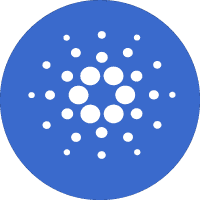

Prezzo di Gas DAOGAS
Dati chiave di Gas DAO
Prezzo live di Gas DAO in EUR di oggi
A proposito di Gas DAO (GAS)
Gas DAO Token: Una nuova prospettiva nel mondo delle criptovalute
Nella costante evoluzione dell'industria delle criptovalute, il Gas DAO Token si distingue come uno dei più promettenti nell'attuale panorama. Questo articolo si concentrerà sulla definizione, sull'importanza e sulle caratteristiche principali del Gas DAO Token, illuminando la sua posizione unica nel mondo delle criptovalute.
Cosa sono i Gas DAO Token
Un DAO, o organizzazione autonoma decentralizzata, è un'organizzazione gestita da smart contracts su una blockchain, piuttosto che da singoli individui o entità. Nel caso di Gas DAO, il token è progettato per funzionare come un mezzo decentralizzato di gestione e controllo all'interno dell'ecosistema Gas.
Il Gas DAO Token è sostanzialmente una criptovaluta che dà diritti di voto ai suoi detentori, consentendo loro di partecipare attivamente alla governance della DAO. Ciò significa che i detentori di token hanno la possibilità di influenzare direttamente le decisioni riguardanti l'organizzazione, dallo sviluppo di nuove funzionalità alla determinazione di come vengono distribuite le risorse.
L'importanza dei Gas DAO Token
L'importanza del Gas DAO Token risiede nella sua capacità di democratizzare la governance all'interno dell'ecosistema Gas. Invece di consentire a un ristretto gruppo di individui o entità di prendere decisioni, i token DAO consentono a una comunità più ampia di partecipare attivamente al processo decisionale.
Questa democratizzazione della governance non solo permette un maggior grado di trasparenza e responsabilità, ma può anche portare a decisioni più equilibrate e riflettute, poiché un maggior numero di voci può contribuire al dibattito.
Caratteristiche principali dei Gas DAO Token
Una delle principali caratteristiche dei Gas DAO Token è la loro decentralizzazione. Questi token non sono controllati da una singola entità, ma sono piuttosto governati da una comunità di detentori di token. Ciò consente una maggiore equità e apertura, in quanto le decisioni sono prese collettivamente piuttosto che da un'entità centrale.
Inoltre, i Gas DAO Token sfruttano la tecnologia blockchain per garantire sicurezza e trasparenzza. Tutte le transazioni e le decisioni vengono registrate sulla blockchain, rendendo facile per chiunque controllare e verificare le attività dell'organizzazione.
In conclusione, il Gas DAO Token rappresenta un esempio eccellente di come le criptovalute possono andare oltre la mera valuta digitale, fornendo strumenti per la gestione e il controllo decentralizzati. Con la continua crescita e sviluppo del settore delle criptovalute, è probabile che vedremo sempre più innovazioni come il Gas DAO Token nell'anno futuro.
Rapporto di analisi IA su Gas DAO
Previsione del prezzo di Gas DAO
Quale sarà il prezzo di GAS nel 2026?
Quale sarà il prezzo di GAS nel 2031?
Promozioni popolari
FAQ
Qual è il prezzo attuale di Gas DAO?
Qual è il volume di trading di 24 ore di Gas DAO?
Qual è il massimo storico di Gas DAO?
Posso acquistare Gas DAO su Bitget?
Posso ottenere un guadagno costante investendo in Gas DAO?
Dove posso acquistare Gas DAO con la commissione più bassa?
Saldo di Gas DAO per concentrazione
Indirizzi Gas DAO per durata dell'holding

Prezzi delle criptovalute correlate
Prezzi delle monete listate di recente su Bitget
Come acquistare Gas DAO(GAS)

Crea il Tuo Conto Bitget Gratuito

Verifica il Tuo Conto

Converti GAS in EUR
Acquista di più
Dove posso acquistare Gas DAO (GAS)?
Sezione video: verifica rapida e accesso rapido al trading

Valutazioni di Gas DAO
Informazioni aggiuntive su Gas DAO
Panoramica della moneta
In relazione alle monete
In relazione al trading
Aggiornamenti delle monete








